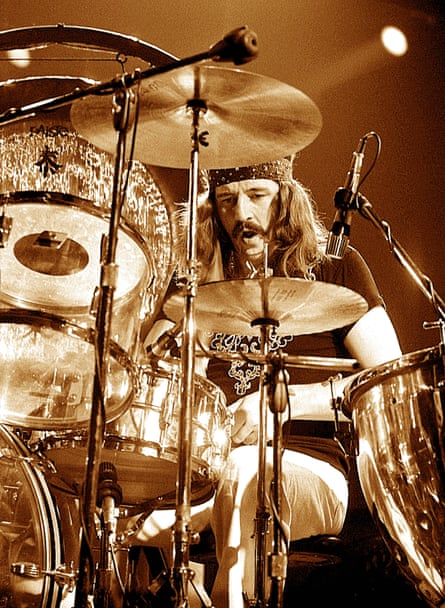It’s amazing that the young Keith Moon got any education at all. At his Wembley school he was hyperactive, easily distracted, addicted to practical jokes – the sort of boy who, in the 1950s and 60s, got quickly spat out of the educational system. A friend later told Moon’s biographer: “You never felt: ‘One day he is going to be famous.’ You felt more likely that he was going to end up in prison.” Nowadays he’d be diagnosed with ADHD, drugged into discipline and eased into some of the gentler GCSEs. Fortunately for everyone else, he discovered drumming and joined the Who.
Playing the drums makes me think of Karl Kraus’s famous crack about psychoanalysis: it’s the mental illness for which it considers itself the therapy. Is drumming the symptom of lawless restlessness, showing off, a desire to make a very loud noise – or the cure for it? Recent research provides the answer: it’s the cure. A 2018 survey by Dr Ruth Lowry at the University of Essex suggested that drumming improved the motor skills and social health of kids with behavioural and emotional challenges. A new survey, led by the same researcher and organised by the Clem Burke Drumming Project (Burke is the terrific drummer for Blondie) goes further. The new study divided 36 teenagers with varieties of autism into two groups, one receiving drumming lessons for two months and one going without. The teenagers who played the drums showed a marked decrease in hyperactivity and inattention.
Turns out it’s good for the brain and body to be hitting skins and stomping pedals: MRI scans, said the researchers, “clearly identified regions of the brain that respond to the stimulus of combining multiple limbs”. The BBC reports that studies involving the health benefits of drumming are currently being conducted in five English school districts. Drumming should become part of the national curriculum, argues Burke.
The academic research makes intuitive sense, along with its implication that what works for neurodivergent kids probably works for all of us. I play the drums fairly regularly with a couple of bands that perform at farmers’ markets, music festivals and other outdoor gigs, and I’m used to the archetypal gawking child who slowly approaches the drum kit and just stands there and stares, entranced and open-mouthed: adults get to do this? To hit things and crash around like … like an octopus in a bathtub? (The memorable phrase once applied to BJ Wilson, the wildly gesticulating drummer of Procol Harum.)

I was one of those children. My best friend’s older brother had a beautiful Tama drum kit. It looked like a spangly spaceship, the round skins like the dials of a dashboard. I already played the piano and trumpet, but that was proper stuff – there was something viscerally right about playing the drums. Of course all musical instruments engage the body, but drumming is directly and holistically physical. Yes, “multiple limbs” are indeed engaged – all of them, in fact. (This is called “independence” in drumming, and is basically the octopus-like skill of chicking the hi-hat with one foot while using the other foot to strike the bass drum – Led Zep’s John Bonham was a master at this.) And as the body starts working, so you become the music and lose yourself, involved in that wonderful dual pull towards keeping the beat and diverging from it, towards order and disorder, dance and destruction.
There’s also the advantage that although chops are obviously better than no chops, teenagers can get by with little training. Put someone behind a drum kit, point out that most rock beats are in 4/4; that the bass drum voices the first beat and the snare drum sounds the second, and the bass drum voices the third and the snare sounds the fourth; add the regular pulse of the hi-hat, and you have your basic beat – you have the opening to AC/DC’s Highway to Hell. A sort of unintentional ASMR starts its soothing magic – you’re the dancer and the dance, paradoxically at the still point of the turning world. However technically brilliant you may get (Keith Moon had almost no technique, while John Bonham had lots), you are still bringing forth something simple, innate and embodied, that heart rhythm that beats away all day, the thumping pulse that is your vitality.
And even if the playing weren’t itself therapeutic, there’s always packing up the drums and lugging around the heavy equipment to keep you strong and fit. No one knows this, but the drummer – traditionally mocked as the brute at the back of the class and stage – always has the last laugh.

